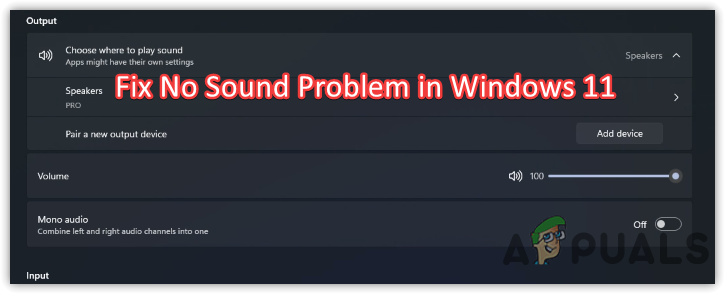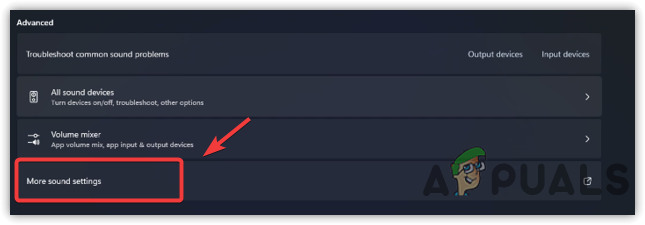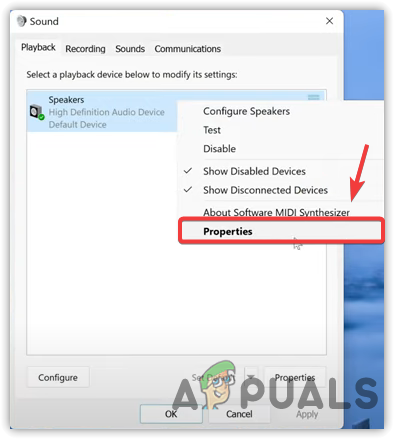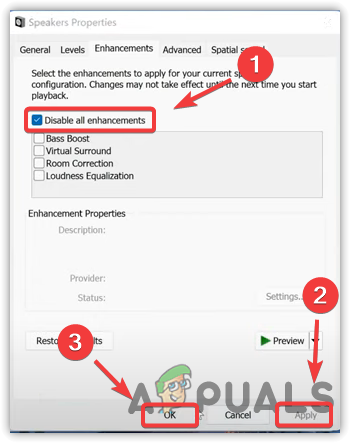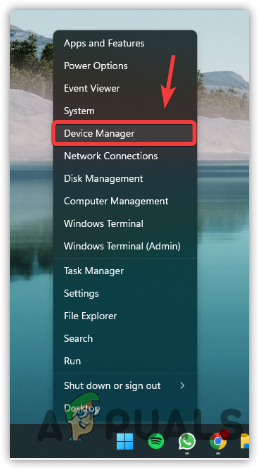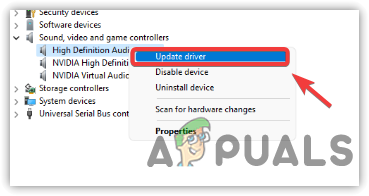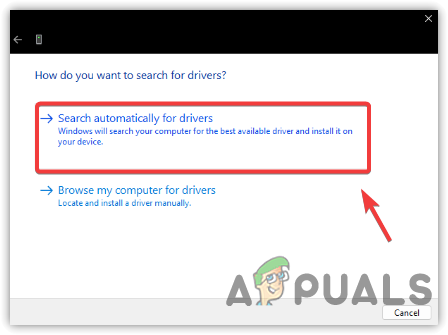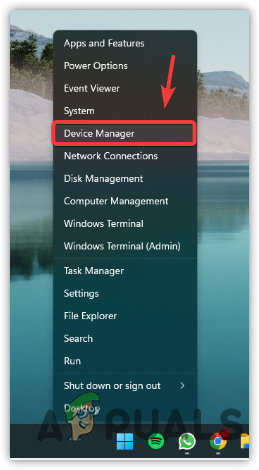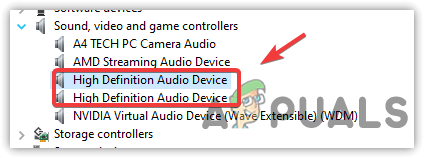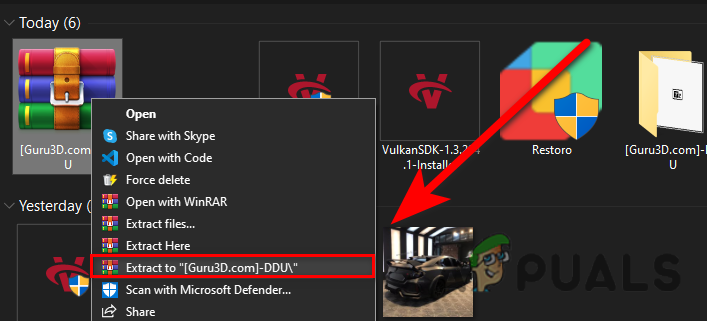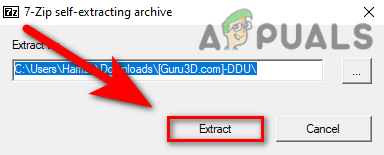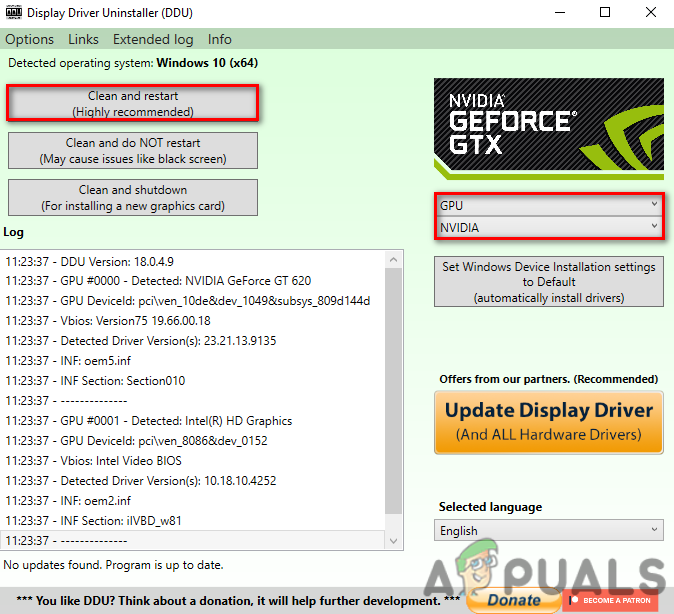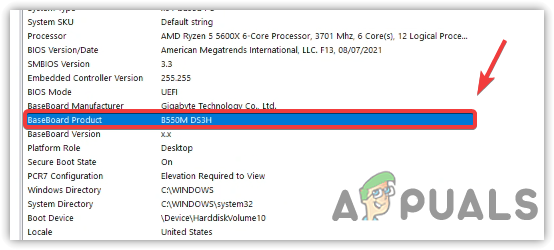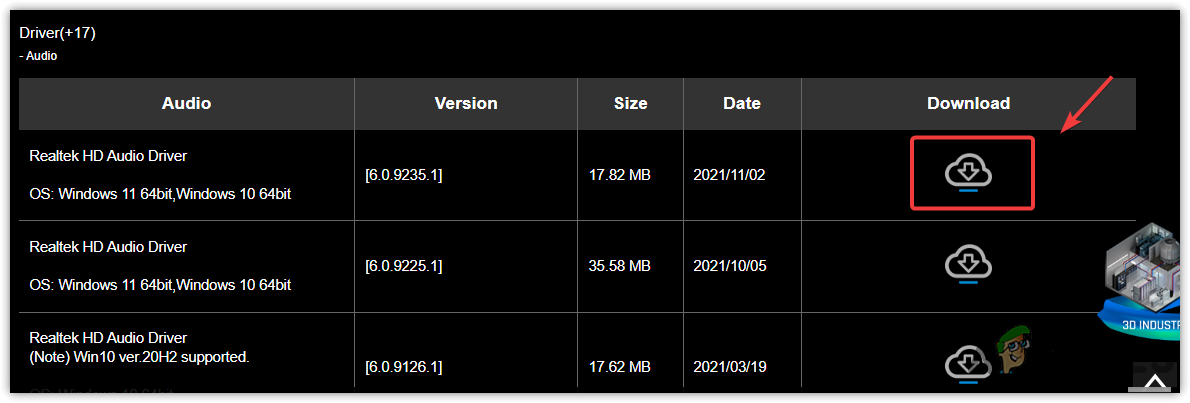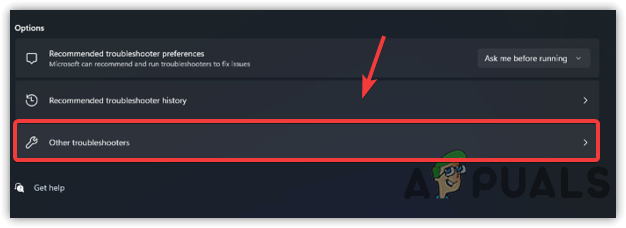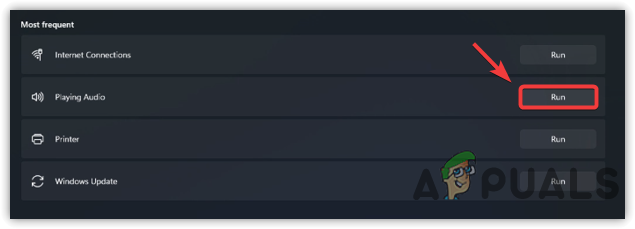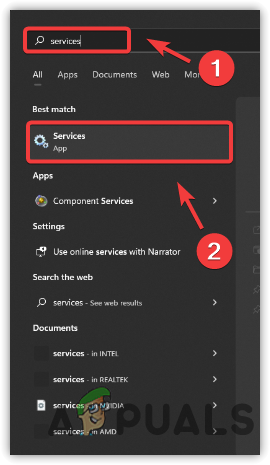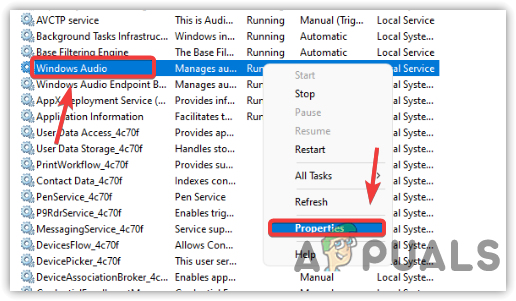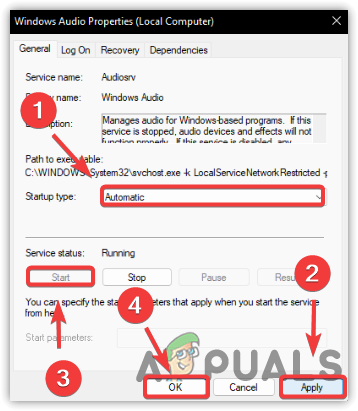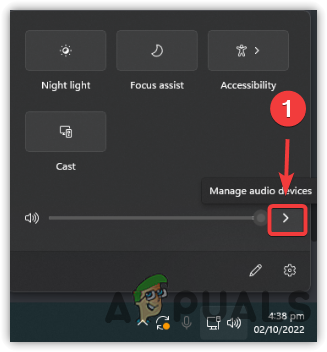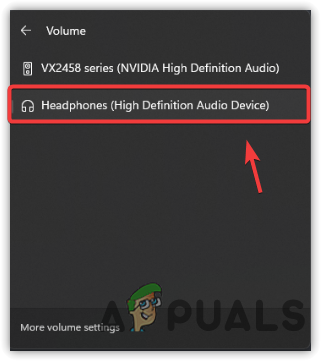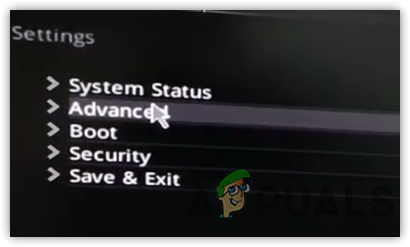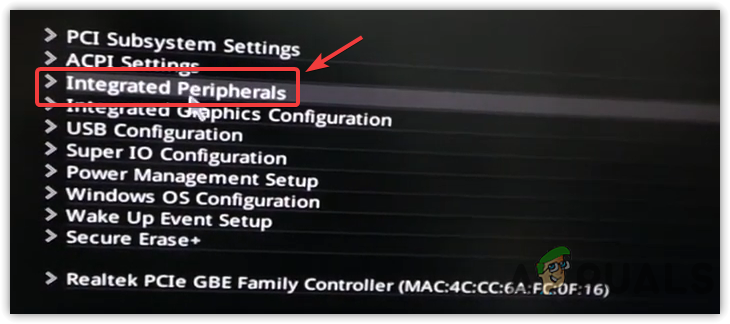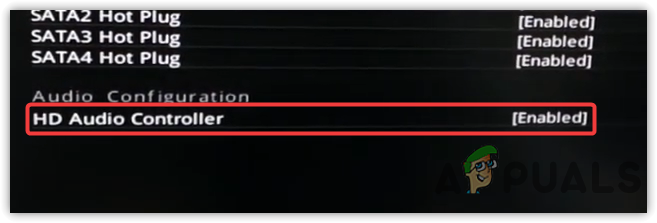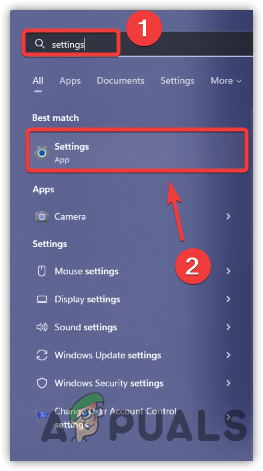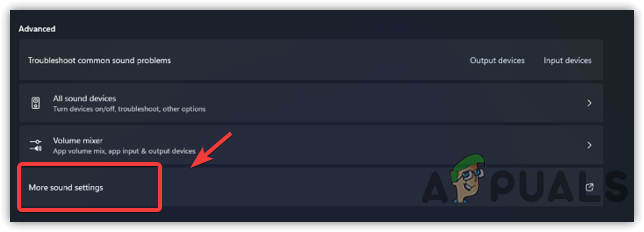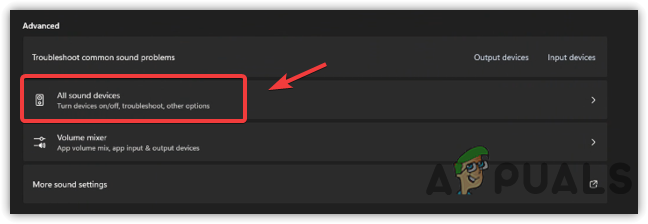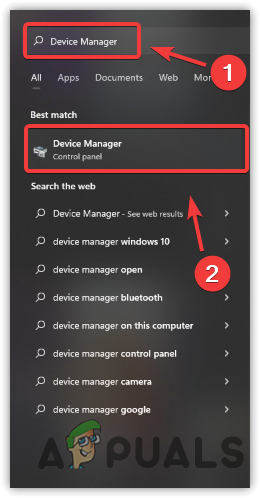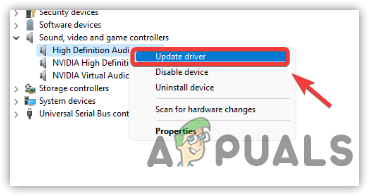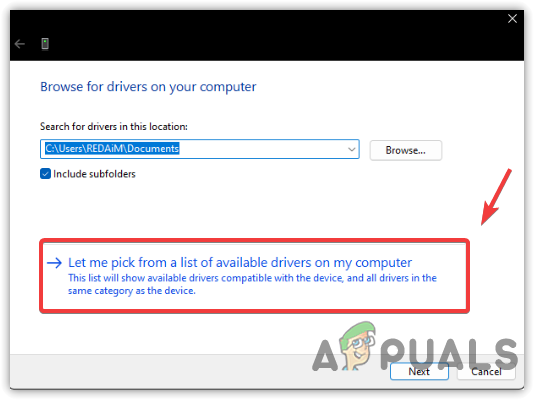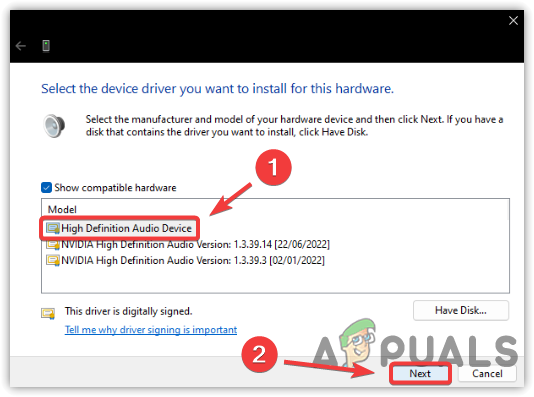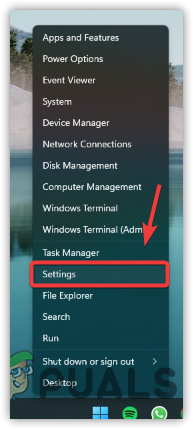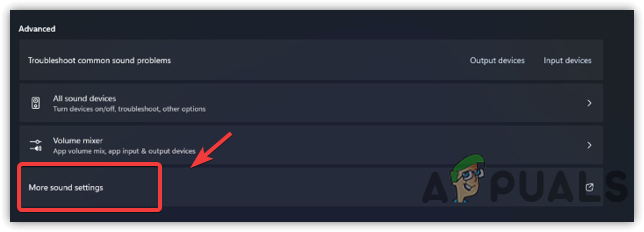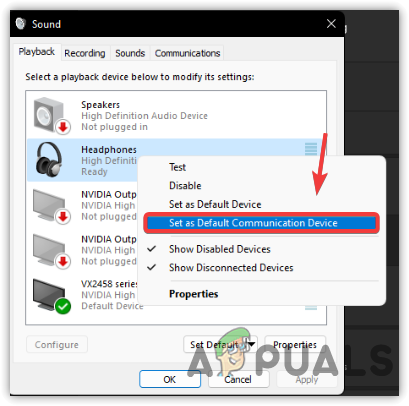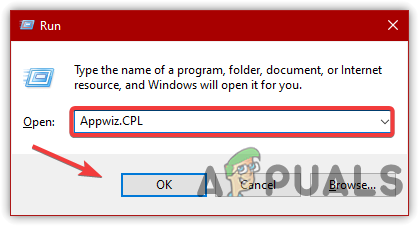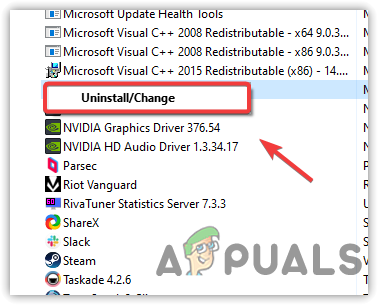Usually, when we install Windows 10 or a lower version, we don’t need to change the motherboard’s bios settings, but before installing Windows 11, we need to enable the Secure Boot and TPM. During this process, we could disable the audio by mistake. However, this is not a leading cause as several affected users have managed to fix this issue by disabling the audio enhancement and reinstalling or updating the driver. It might be possible that Windows installed the audio driver, which is incompatible with your motherboard, or if you use a third-party driver, then make sure to download a driver from the manufacturer’s website. We have outlined some of the common causes below. Let’s have a look at them as one of the following might be a leading cause in your scenario:
Enabled Audio Enhancement- Audio enhancement is designed to improve audio. However, in most cases, it can cause no sound in Windows.Outdated or Corrupted Driver- Another leading cause is the outdated or corrupted driver, which is why some users have managed to fix this issue by updating their driver to the latest version.Conflict of Audio Driver- If you do not have enough knowledge about the drivers, it might be possible that you installed a couple of audio drivers for a single device by mistake, and as a result, your Windows is trying to use all of them at the same time. Thus, the issue is occurring; to fix this, do a clean installation of your audio driver.Disabled Windows Audio service- Windows audio service manages all the audio devices connected to your computer. If this service is disabled, you cannot use any of your audio devices in Windows. Usually, the service automatically starts when Windows boots up. However, in some cases, it gets disabled. Hence, make sure that the audio service is running correctly.Faulty Audio Ports- If you use front audio jacks, it may be possible that the front ports cannot receive power from the motherboard for some reason, which is why the audio is not working on your Windows. To ensure that the audio jacks are working fine, use the back audio jacks rather than the front.Unsupported Sample Rate- The issue can also be caused by using the unsupported sample rate. In my case, the issue was the unsupported sample rate, which was fixed by changing the sample rate to a lower or compatible one.Incompatible Audio Driver- No sound in Windows can also occur due to having an incompatible driver, which Windows can install. Therefore, ensuring that you have a compatible driver with a motherboard is important. You can check the compatibility of your driver by following the below method.
If you encounter this issue with Bluetooth headphones, you can refer to this article on How to Fix “Bluetooth Issues” in Windows 11 22H2. Because if you have Bluetooth headsets, it’s possible that your Windows’ Bluetooth Services/Drivers aren’t enabled/working correctly; we have recently seen many users complaining about Bluetooth issues in Windows 11 22H2 Edition. If your Bluetooth drivers are working as intended, you can follow the steps below to rule out any other audio issues you might be facing.
1. Disable Audio Enhancement
Audio Enhancement utility allows users to clarify the sound coming from the computer by reducing unnecessary sounds. Despite this, enabling the audio enhancement from the audio settings can also lead you to this issue. Therefore, it is recommended to uninstall third-party vendors and disable the enhancement from the sound settings. Below are the instructions:
2. Update Sound Drivers Via Device Manager
The corrupted or outdated driver can also be the leading cause in this case, as the issue has been fixed by updating the driver through several affected users. There are different methods to update your audio drivers, but in this case, the effective one is to update the drivers via the device manager. Moreover, if you use any third-party driver, go to your device manufacturer’s website and download the latest driver.
3. Reinstall Audio Driver
If updating the drivers from the device manager does not help to fix this issue, it is possible that there is a conflict between the audio drivers causing this issue. Usually, when Windows think you have an outdated driver, it downloads the same or an older one, and due to that reason, the conflict of the audio driver issue occurs. Moreover, when there are multiple drivers for a single device, you might notice that the device starts misbehaving. Hence, to fix this, you will need to uninstall all the drivers first.
3.1 Uninstall Audio Driver
Before uninstalling the audio driver, check if multiple drivers are installed for your headphone or speaker. If only one driver is installed for your sound device, you are not suffering from the conflict of the driver. You can move to the other method. To ensure that, follow the steps: Here, if you find multiple drivers for your single device except for the speaker or your headphone, you are encountering this issue due to a conflict of drivers. You will need to uninstall all of the audio drivers quickly. Even though you can use device manager for this process, we recommend DDU over device manager as it uninstalls the device drivers and clears the registry files. Below are the steps you can follow to uninstall drivers:
3.2 Install Audio Driver
After uninstalling the audio driver, you now need to download the latest audio driver. Although you can use Device Manager for this process, we recommend downloading the driver from the manufacturer’s website. We also prefer downloading a motherboard-compatible audio driver as it is recommended by the manufacturers. If you use To do so:
4. Run Audio Troubleshooter
The audio troubleshooter is used to fix the problems related to Playing Audio. To run the audio troubleshooter, follow the steps:
5. Restart the Windows Audio service
Windows audio service is used to control all the connected devices. It is an important service as it is responsible for enabling sound on Windows. If this service is stopped or not working, you will not be able to hear audio from your computer until you enable the service. Here are the steps:
6. Select Correct Output Device
The incorrect output device can also cause this issue because sometimes, we select the wrong output device by mistake, or Windows might automatically detect the wrong output device. Thus, this issue can occur, and to fix this, just select the right output device from the sound settings.
7. Enable Audio Jacks From Motherboard’s Bios Settings
You can enable or disable the audio jacks from the bios settings. It might be possible that your audio jack panel is disabled, so you are facing no sound issues on Windows. If that’s the case, you can easily enable audio jacks by navigating to the bios settings. However, If you are a sound card user, changing the bios setting will make no difference because the sound card is a separate component with nothing to do with the motherboard’s bios settings. Despite this, It is possible that your sound card is not working, which is why you cannot hear any sound from your audio device. If that’s the case, you can consider buying a new sound card by visiting this article Which Sound Card Should You Buy and Why.
8. Change Audio Ports
Another possible reason for this issue can be a faulty jack port as sometimes the motherboard stops giving power to the front panel ports due to many factors. Hence, try using back panel audio jacks to ensure the ports work. If the issue does not resolve, keep in mind that the issue might be due to a hardware problem with your headphones or speaker. Before considering buying new headphones, follow the remaining steps.
9. Change Sample Rate
You will likely run into this issue if you use an unsupported sample rate for your headphones or speaker. The common sample rate is between 44 kHz to 48 kHz, you can use these sample rates for your headphone or speaker. In my case, when I selected a high sample rate, I could not hear any sound from my computer. Hence, try lowering the sample rate to the compatible one. Follow the below steps:
10. Try Generic or Old Audio Drivers
After doing all the above methods, and you still face this issue, try switching to the generic audio drivers. Sometimes, even the latest driver installed from the vendors does not work perfectly, and due to that reason, the issue could occur. You can switch to the generic audio driver to fix this issue. Here are the steps:
11. Set Speaker As a Default Communication
If you have multiple speaker devices, it is possible that your primary device is not selected as a default communication. You can follow the instructions below to make your primary audio device a default communication. Below are the steps:
12. Uninstall Third-party Audio Modification Applications/Services
Some third-party applications, such as Voicemod and Equalizers, can install their own custom drivers, and when these applications aren’t working correctly, they can interfere with your main driver causing no audio output issue on Windows. To counter this, it is recommended to check these applications if you have accidentally disabled your audio from these applications if you can’t able to find any option that is disabling your audio. It is suggested to back up these programs’ settings and uninstall them to check if this resolves the conflict between drivers. If uninstalling these software work for you, try re-installing them and check if the audio is working fine. Here are the steps: If all else fails to fix this issue, you can try more methods by visiting this article on No Speakers or Headphones are Plugged In.
How to Fix the NVIDIA High Definition Audio no Sound Problem on Windows?Microsoft Confirms Surface Earbuds Sound Issue is A Universal Problem & A…[FIX] Spatial Sound Reverting to Windows Sonic on WindowsFix: Skype Problem with Playback Device on Windows 10
